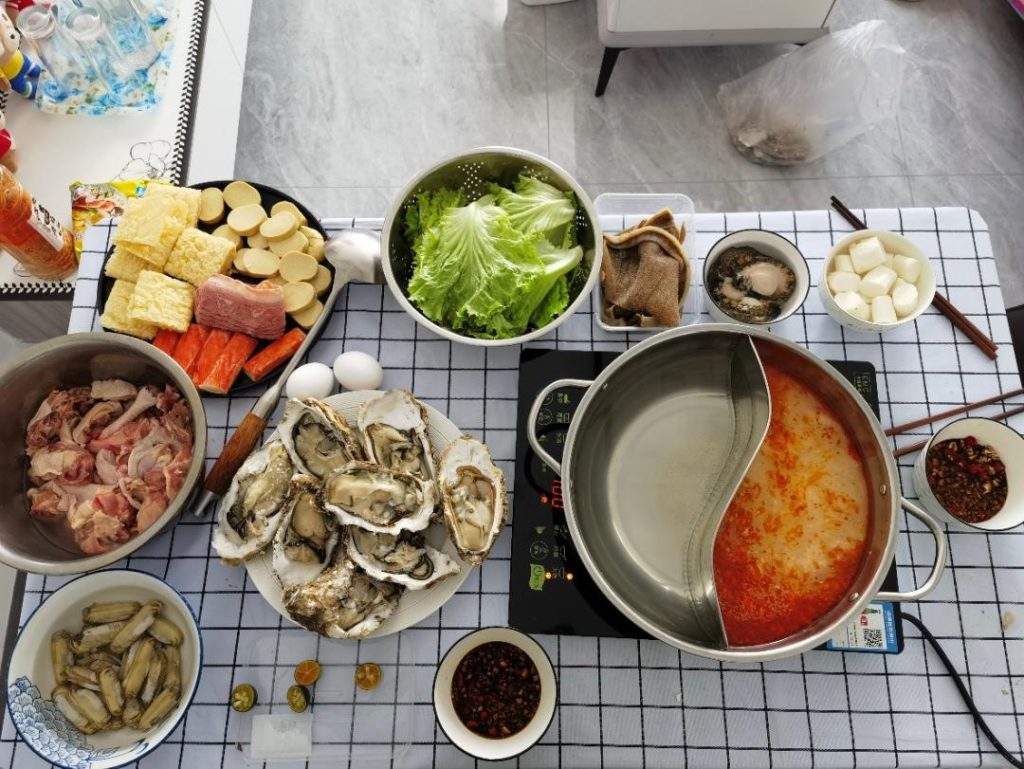
Read More《七夕消费观察:理性主导下的消费共性与新趋势》
Positive Comments: The Rise of Rational Consumption and the Consumption Revolution of Qixi Festival Returning to the Essence of Emotions
An important signal was revealed in the consumption observation of the Qixi Festival in 2025: as labels such as “love tax” and “Valentine’s Day consumption festival” gradually fade away, rational consumption is becoming the dominant trend. This transformation is not only a profound adjustment in the consumer market but also a dual upgrade in emotional expression and value perception.
First of all, the rise of rational consumption has broken the consumerist trap of “material possessions = love”, allowing emotions to return to their true nature. In the past, the Qixi Festival was often packaged by merchants as a scenario where “a sense of ritual = high – end consumption”. Nine – hundred – and – ninety – nine roses, jewelry worth tens of thousands of yuan, and “romantic packages” with an average per – person cost of a thousand yuan seemed to be the “standard configuration” of love. However, in this year’s cases, whether it was white – collar workers in first – tier cities making a 200 – yuan dinner at home, student couples having a 100 – yuan date on the snack street, or newlyweds choosing a skewer restaurant for a meal, all sent a clear message: love doesn’t need to be proven by the thickness of one’s wallet. The “Report on Running for Prosperity for Love” by Alipay shows that over 3.5 million couples opened “couple wallets” to save money together, with post – 2000s accounting for more than half. This data directly confirms that young people attach far more importance to “planning for the future” than “instant high – end consumption”. This transformation not only eases the economic pressure on young people but also frees emotional expression from the shackles of materialism and returns it to the essence of “genuine companionship”.
Secondly, the popularity of experiential consumption and pragmatism has promoted the optimization and upgrading of the consumption structure. The cases mentioned in the news, such as a couple in Xi’an choosing to take an archery course together (costing 200 yuan), a couple in Chengdu rejecting “fancy meals” and choosing skewers, and student couples in Wuhan visiting the snack street, all point to a new trend: consumers are more willing to pay for “emotional resonance” and “shared memories” rather than “idle luxury goods” or “superficial displays”. This change in demand is essentially a leap from “possessing items” to “obtaining experiences”. For example, projects like handicraft courses, outdoor sports, and Hanfu experiences not only meet the need for couples to spend time together but also enhance their understanding through interaction. Practical gifts (such as a book the other person likes, skin – care products, or vouchers for household chores) show concern for each other’s needs and are more emotionally warm than “flashy but useless” gifts. This optimization of the consumption structure not only drives the development of new sectors such as the experience economy and traditional cultural experiences but also forces merchants to shift from “creating anxiety” to “creating value”.
Finally, the common characteristics of rational consumption provide a more sustainable development direction for merchants and the market. In the past, Qixi Festival marketing often relied on “festival price hikes” and “emotional coercion”. However, this year, consumers have proven with their actions that high cost – effectiveness and sincere communication are the keys. Behaviors such as “comparing prices in advance”, “rejecting false discounts”, and “diversified consumption choices” mentioned in the news require merchants to abandon the short – sighted thinking of “exploiting festival consumers” and instead win trust by optimizing costs, improving service quality, and conveying emotional value. For example, launching affordable festival packages, designing experiential activities combined with traditional culture (such as Hanfu arrow – throwing games), and using story – based marketing to convey the value of “companionship” can meet consumer needs and build long – term brand reputation.
Negative Comments: Hidden Worries behind Rational Consumption and Challenges in Market Transformation
Although rational consumption is the mainstream trend in Qixi Festival consumption, there are also hidden problems worthy of attention, and it also poses higher requirements for the transformation ability of some industries and merchants.
Firstly, excessive rationality may weaken the sense of ritual of the festival, leading to a “flattening” of emotional expression. The sense of ritual is one of the core values of the festival, which strengthens emotional connections through specific behaviors or symbols. For example, a carefully selected bouquet of flowers or a well – prepared date itself carries the signal of “putting in effort”. If consumption completely turns to “pragmatism”, some couples may fall into the extreme of “simplifying the ritual to save money”. For example, while it is considered progress that “not giving expensive gifts = not loving enough” is no longer believed, if even “small and beautiful” rituals (such as hand – written cards or customized small gifts) are omitted, emotional expression may become too “practical” and lose its romantic touch. This risk needs particular attention among the young generation. When “anti – consumerism” becomes politically correct, finding a balance between rationality and the sense of ritual is a topic that couples need to consider.
Secondly, traditional high – premium industries are facing survival pressure and have great difficulties in transformation. The Qixi Festival used to be the “golden period” for industries such as flowers, jewelry, and high – end catering. However, the rise of rational consumption has directly impacted the revenue logic of these fields. For example, the diamond industry has “fallen from grace” in recent years because consumers no longer pay for the marketing concept of “love lasts forever”. If high – end restaurants continue to maintain high prices for their “Qixi Festival packages”, they may be abandoned by consumers due to “pre – made food prevalence” and “low cost – effectiveness”. If these industries cannot quickly adjust their strategies (such as launching small and refined affordable products or integrating experiential elements), they may face the risk of customer loss and even market shrinkage. In addition, some merchants relying on the “festival economy” (such as traditional flower shops) may be eliminated from the market if they do not transform into “emotional experience service providers” (such as offering flower – arranging courses or customized handmade flower bouquets).
Thirdly, the homogenization of experiential consumption may lead to new “involution”. Although projects such as handicraft courses, outdoor sports, and Hanfu experiences mentioned in the news are popular, the low threshold of this type of consumption easily leads to homogeneous competition. For example, if multiple merchants simultaneously launch “couple archery courses” or “Hanfu arrow – throwing activities” with highly similar content, consumers may lose interest due to choice fatigue. In addition, if some experiential projects only stay at the level of “form innovation” (such as simple activity stacking) and lack in – depth emotional resonance design (such as customized services based on the couple’s shared memories), they may be difficult to form long – term attractiveness. If this homogenization risk is not taken seriously, the experiential consumption sector may quickly change from a “blue ocean” to a “red ocean”.
Suggestions for Entrepreneurs: Seize the Trend of Rational Consumption and Find Opportunities in Emotion and Value
Based on the observation of Qixi Festival consumption in 2025, entrepreneurs can start from the following directions to seize the market opportunities brought by rational consumption:
Focus on product design with “high cost – effectiveness + emotional value”: Consumers are price – sensitive but reject the “cheap feeling”. Therefore, products need to find a balance between cost – effectiveness and emotional experience. For example, the catering industry can launch “Qixi Festival home – kitchen packages” (providing ingredient packs + cooking teaching videos), which not only meet the need for a homemade dinner but also enhance emotional value through the ritual of “accomplishing it together”. The gift industry can develop combinations of “practicality + memorability” (such as “books + hand – written notes”, “skin – care products + customized greeting cards”), making gifts both practical and full of sincerity.
Deeply explore differentiated innovation in experiential consumption: To avoid homogeneous competition, efforts should be made on the “uniqueness” and “depth” of the experiential content. For example, couple escape rooms can design storylines based on the couple’s shared experiences (such as “memory – based challenges”), handicraft courses can add a “co – creation” link (such as jointly making ceramic cup sets), and traditional cultural experiences can incorporate couple interactions (such as “winning customized tokens in an arrow – throwing competition”). Improve the irreplaceability of the experience through “customization” and “interaction”.
Use emotional marketing to convey brand values: Consumers reject “consumerist coercion” but recognize “sincere resonance”. Entrepreneurs can use story – based marketing to convey brand concepts. For example, a catering brand can shoot “ordinary people’s Qixi Festival stories” (such as a simple dinner of a food – delivery couple), emphasizing that “companionship is more important than form”. A jewelry brand can launch “light – weight” emotional tokens (such as engraved couple rings), conveying the sincerity of “small but dedicated” rather than the logic of “expensive = love”.
Pay attention to segmented needs and expand consumption scenarios: Rational consumption does not mean “saving money across the board” but “spending money where it matters”. Entrepreneurs can explore segmented needs. For example, provide “campus Qixi Festival guides” for students (such as low – cost snack maps and free activity guides), design “efficient dating packages” for working – couple groups (such as “a delicate dinner + a movie in 2 hours after work”), and develop “life – planning services” for newlyweds (such as “saving money together + Qixi Festival travel funds”). Open up new markets by accurately meeting the needs of different groups.
Attach importance to data and user feedback and dynamically adjust strategies: Rational consumers make decisions through price comparison and research. Therefore, entrepreneurs need to pay attention to consumption data (such as historical e – commerce prices and user reviews) and adjust pricing and services in a timely manner. For example, during festivals, launch “regular prices + festival – exclusive services” (such as free packaging and hand – written blessings) to avoid annoyance caused by “festival price hikes”. At the same time, understand “which experiences are most popular” and “which products are left idle” through user research and quickly optimize the product structure.
Conclusion
The rational shift in Qixi Festival consumption in 2025 is not only an active reflection by consumers on the “proliferation of consumerism” but also an inevitable choice for the market to return to the “essence of emotions”. For entrepreneurs, this trend is both a challenge (they need to bid farewell to the old model of “exploiting festival consumers”) and an opportunity (they can meet the new needs of “rationality + emotion” through innovation). Only by truly understanding the core demand of consumers for “both cost – effectiveness and emotional resonance” can they stand firm in this consumption revolution and inject more sincerity and warmth into the market.




